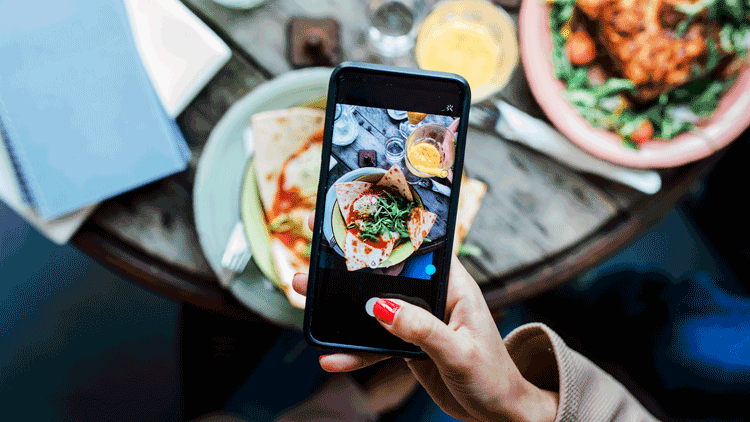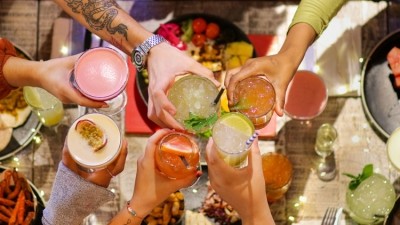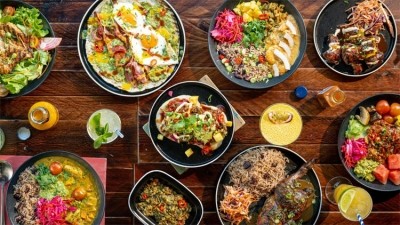Turtle Bay: “Over the last two years TikTok has completely transformed our business”

Speaking at last month’s Hostech conference, organised by BigHospitality and MCA, representatives from restaurant groups Pho, Pizza Pilgrims and Turtle Bay discussed how social media has changed the way they interact with their customers and held build loyal customer followings as never before.
Libby Andrews, marketing director at Pho, described social media as being “absolutely critical” for the Vietnamese restaurant group. “I can’t image a restaurant brand of our size and our audience not being on social media,” she said. “It offers a mix of brand awareness, brand loyalty and a key opportunity to engage with our customers.”
Pizza Pilgrims said it has also used social media to improve customer engagement. “Marketing in social media has been massive for us,” said Nish Bhattarai, marketing manager at the pizza group. “Not only is it important for brand awareness but it allows us to be quite close to the customer – it feels really personal. Instagram has been very important for the growth of the brand pre and post Covid and also during.”
Caribbean restaurant Turtle Bay, meanwhile, said social media, and in particular TikTok, had had a massive impact on its business. “Over the last two years TikTok has completely transformed our business,” Ben Hibbard, head of marketing at Turtle Bay, told delegates.
One of the big successes for the group over the past couple of years has been its bottomless brunch, which Hibbard said now accounted for a third of the group’s sales. The audience for the brunch is 18-24 year olds, which he said is very much celebrated though TikTok, and that online challenges including people seeing how many drinks they could get in the time limit had boosted its popularity. “In terms of the awareness gains in that audience it has been absolutely phenomenal,” he said. “None of that would have been possible without these channels.”
Working the different channels
The panel also discussed the differences between the social media channels and the opportunities and challenges this posed.
Hibbard described how the company targeted different platforms for specific purposes. “TikTok is an entertainment platform so anything you do should be to try and entertain people rather than push the sales message,” he said. “Twitter can be a slightly angrier place.
“We have a hugely engaged Facebook group of people in their 30s, 40s, and 50s who love the fact that we are a Caribbean restaurant because they go on holiday there. The way we talk on there is very different to how we talk on TikTok. It’s making sure you’re tailoring your output.”
“I can’t image a restaurant brand
of our size and our audience
not being on social media”
“We’re not straightforward selling noodles on TikTok whereas on Instagram it’s really a food gallery and a sell and it makes you hungry and want to book,” said Andrews. “With TikTok you’re building a personality. We do have a nice audience of 18-25 year olds but our key audience will be looking at Instagram. You have to know how to use it and how much.”
Bhattarai said that Pizza Pilgrims’ engagement on Facebook was very high when it launched its Pizza in the Post product but that it didn’t try to replicate the success on TikTok. “If you try and sell on TikTok people will rip into you, that’s a market we’re still a bit nervous about delving into. Instagram is our home, and we are comfortable with the language and our content.”
Andrews also observed that Facebook was also a key channel for Pho, especially for new restaurant launches. “Definitely don’t sleep on Facebook as a brand because people are looking at it. From an organic point of view, we focus heavily on Instagram, whether it’s our own content or sharing our customers’ content, but on Facebook we’re really creating digital ad sets and targeting people across the country. We know that it works to build demand for a new opening, to get us 3,000 to 5,000 people in our database before we open the doors. We know that a million students are still seeing our ads from Facebook even though you would think most are on TikTok.”
Who’s in charge of social?
When it comes to running social media accounts, it is traditionally seen as a young person’s game. Pho, Pizza Pilgrims and Turtle Bay all admitted that there was a temptation to hand over the running of their company social media channels to younger team members but also cautioned in taking this approach.
“We’ve been guilty in the last few years of always giving it to the intern or the younger team member because the thinking is ‘they are young, they must know the most about social’. That is right to a certain degree because they live in these platforms and have a natural intuition to it, but they do need that guiding hand.
“We’ve got a very active internal social platform that we re-purpose, but we have still got a digital marketing manager tracking performance and telling us what’s working, when the best time to post is. You need the combination of the two.”
“The days of your team coming through
[more traditional recruitment] is on the wane”
Andrews described how she got young Pho team members to create TikTok content and while it was good for staff engagement, the brand guidelines weren’t being followed as she’d hoped. “We next went to some young professionals who claim to know what they are doing in TikTok and it’s a still a conversation; you brief them on what you want, and they come back with ideas. But on Instagram we know what we are doing.”
When it comes to assessing the effectiveness of social media campaigns, the restaurants recognised it was often quite hard to calculate a specific return on investment (ROI) but that certain things could be attributable to them.
“Some things we do are very trackable,” said Hibbard. “When we do our ads, and we don’t do many, but when we do, they are highly targeted. From resulting ROI you can track that back all the way through to the booking and almost attach the spend in the restaurant.
“A lot of it is a lot softer. The big success in TikTok is when our annual report on brand awareness came back and it was through the roof - you can attribute that to social. Nothing else that would have delivered the scale of growth we saw.”
Using social for recruitment
Restaurants are also starting to unlock other benefits of social media and speak to people beyond their customers. Andrews spoke about how Pho has harnessed the power of TikTok as a potential recruitment tool, using the platform to highlight the benefits of working in hospitality.
“We decided that one of the key messages we wanted to share was that you could actually make good money in hospitality. Or you could be surprised to learn what you could earn. We created a few TikTok videos showing servers and chefs saying, ‘this is what you can earn for this many hours’.”
Andrews said the videos received between 200,000 to 300,000 views with one video leading to hundreds of job applications.
“The days of your team coming through [more traditional recruitment] is on the wane,” added Hibbard. [Social] is the platform our team have and live in, and it is the platform we should be recruiting in and using content that is engaging. That’s the route to get them rather than through a more traditional job advert.”































